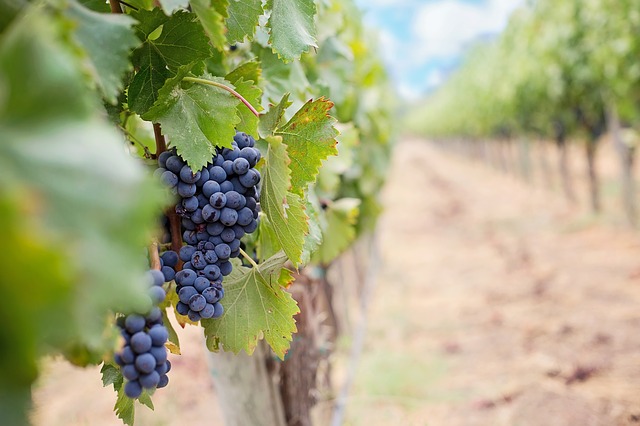The Cape Winelands is expected to fare much better in 2019 than it did in 2018, as grapevine crops are predicted to go back to flourishing at their normal levels after bountiful winter rains came to the Cape this year following a crippling three-year-long drought.
Although the size and quality of the 2019 wine grape crop will be influenced by the weather that was experienced in this year’s flowering period, a preliminary report conducted by wine industry body Vinpro shows that the vineyards will recover from the drought.
“The dry, warm conditions that dominated the 2018 harvest season have persisted in the post-harvest period, which in certain cases has had a positive effect on leaf drop and the accumulation of essential reserves,” says Francois Viljoen, Manager of Vinpro’s Viticultural Consultation Service. “We will also still have to see how the fluctuating weather conditions experienced during October play out in the vineyard.”
All regions experienced good cold conditions during the winter and rainfall was higher than last year, excepting the Klein Karoo area which is still suffering from serious drought.
Spring set in earlier than normal this year, and so the vines began budding earlier than usual.
Temperature fluctuations in the month of September delayed vine growth, and in certain cultivars resulted in late and uneven bud burst. However by the end of September, temperatures steadied and became warmer, resulting in good subsequent vine growth.
The report by Vinpro states too that important catchment dams in the Cape, namely the Theewaterskloof (58%), Berg River Dam (99%), Steenbras Dams (70%), Brandvlei Dam (59%) and Clanwilliam Dam (96%) are fuller than they were at this time last year.
“Groundwater levels are also looking more positive in the Swartland, where producers mainly cultivate dryland vineyards,” Viljoen says.
According to Viljoen, the greater availability of water contributes to the industry’s expectation that the wine grape crop will return to normal levels in most regions, “provided that the favourable weather conditions continue and no excessive wind, heat or rainfall occur leading up to the 2019 harvest, which normally kicks off at the end of January.”
Low reserve levels due to the previous three years’ drought, along with a shrinking of areas under vines in the majority of regions, will be big factors in how the 2019 harvest goes. The total area under wine grape vineyards in South Africa shrunk by 1 296 hectares in 2017 measured against the previous year. “On the positive side, we are seeing a revival in wine grape vineyard plantings in 2018,” says Viljoen.
Drought conditions have been prevalent in the Klein Karoo since 2015. The region experienced sufficient cold this year, but the rainfall throughout the season in parts like Calitzdorp, Ladismith, Oudtshoorn, and Barrydale was far below the average.
At the beginning of November, the Calitzdorp Dam was only 13% full compared to 22% at the same time last year. Meanwhile, the Gamkapoort Dam has been empty for the past three years.
“Producers in the Klein Karoo receive no water from a water scheme, and thus are dependent on water from the Swartberg Mountains and surrounding ravines. A heatwave mid-October, together with strong winds, dried up this water supply even further,” says Jandré Human, manager of Barrydale and Ladismith Cellars.
According to Hennie Visser, Vinpro viticulturist for the Robertson and Klein Karoo regions, water from boreholes helps supplement water sources, but is not sufficient. “In many cases the quality of this water is not very good. Good rain is required to supplement water sources and leach salts out of the soil.”
The region usually receives south-eastern rain in April/May and again in October/November. No significant rain has fallen in these periods in recent times, and producers in the region are of the opinion that vine growth will truly be hindered if no rain occurs in the next two to three weeks.
“Where flood irrigation has been applied, it appears that vineyards are doing better as roots are distributed more widely, whereas in vineyards that are drip irrigated, the roots are focused around the dripper and therefore do not have the same reach to get access to water,” says Danie van der Westhuizen, manager of Calitzdorp Cellar.
As a result of the drought, reserve vine-levels are also very low and it is expected that the wine grape harvest in the Klein Karoo will be significantly low for a third consecutive year.
“Although we are grateful for the rainfall and increase in available water supplies in most of the other wine grape growing regions, our hearts go out to our wine grape producers in the Klein Karoo region who are under severe pressure – not only in terms of the persistent drought and subsequent effect on the wine grape crop, but also [in terms of] the fact that it will affect the already precarious financial position of these producers even further,” says Rico Basson, Vinpro Managing Director.
Water supplies in the Olifants River region, which was hit hardest of all the regions by the severe water shortages, are improving due to the good rainfall this year and the full Clanwilliam Dam, which is currently in the process of being expanded. “It will, however, still take quite a while for vineyards in this region to fully recover, and in the meantime it is still a challenging time for the wine grape producers there,” says Basson.
Picture: Pixabay






